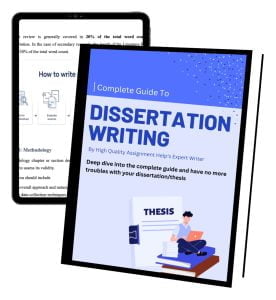The promotion of cognitive development is a key goal in early childhood education. We have been entrusted with the duty of fostering young brains and preparing them for a lifetime of learning as educators, parents, and carers. Making children’s thinking apparent is a potent strategy for achieving this. We will delve into the relevance of making children’s thinking apparent and its significant impact on cognitive development in this in-depth investigation.
The Role of Cognitive Development
Understanding why cognitive development is a cornerstone of early childhood education can help us better appreciate the significance of making children’s thinking apparent. The term “cognitive development” describes the expansion and maturation of a child’s mental and intellectual capacities. It includes activities like memory, critical thinking, language learning, and problem-solving. These cognitive abilities are the cornerstone of all future learning and are crucial to a child’s academic and social growth.
What Does It Mean to Make Children’s Thinking Visible?
Transparency in learning is the foundation of the educational philosophy of making children’s thinking transparent. It entails setting up a setting where kids’ ideas, reasoning, and mental processes are made clear and observable to both the kid and the teacher. Numerous techniques, such as open-ended inquiries, group discussions, visual aids, and reflection exercises, can be used to accomplish this.
Why Is It Important?

Let’s now explore the persuasive arguments for why it is essential for children’s cognitive development to make their thinking evident.
- Promotes Metacognition: Children become more conscious of their cognitive processes when they are encouraged to articulate their ideas and reasoning. They can monitor and refine their thinking thanks to this metacognitive awareness, which strengthens their problem-solving abilities.
- Enhances Communication Skills: Effective communication is facilitated by making thought apparent. Children gain the ability to express themselves clearly, pay attention to others, and have meaningful discussions. These abilities are necessary for interpersonal relationships as well as academic performance.
- Encourages Critical Thinking: Teachers can challenge students to think critically and analytically by asking them to describe their cognitive processes. A key talent that is useful in all aspects of life and goes beyond the classroom is critical thinking.
- Strengthens Conceptual Understanding: Children have a greater comprehension of ideas when asked to elaborate on their ideas. This comprehension goes beyond simple memorizing and establishes the foundation for real subject mastery.
- Fosters a Growth Mindset: Making thinking visible encourages a growth attitude, in which kids think that their skills can be improved through perseverance and effort. This kind of thinking promotes adaptability and a readiness to take on difficulties.
- Supports Different Learning Styles: Making thinking visible caters to varied learning methods because every child learns differently. While some kids may do better with verbal communication, others might prefer using visual or hands-on methods. In order to meet each student’s unique needs, educators provide a variety of approaches to make thought apparent.
- Strengthens Parent-Teacher Collaboration: A cooperative relationship between educators and families is created when parents are involved in their child’s educational path and can observe their thought process. The child’s cognitive development may benefit more from this collaboration in terms of assistance.
Strategies for Making Thinking Visible

Now that we are aware of its significance, let’s look at some useful methods for making kids’ thinking visible:
- Questioning Techniques: Ask open-ended questions to compel kids to justify their answers. For instance, “Why do you believe that to be the case?” or “Can you elaborate on your idea?”
- Think-Aloud: By explaining your logic as you solve issues or discuss ideas, you can demonstrate how you think. This exemplifies how to be explicit in thinking.
- Visual Aids: Use diagrams, charts, and mind maps, as well as other visual aids, to help kids visualize their ideas. Visual learners would greatly benefit from this.
- Group Discussions: Promote conversations in groups where kids can voice their opinions and learn from one another. As a result, a collaborative learning atmosphere is promoted.
- Journaling: Give them journals or reflection papers where they can jot down their ideas or draw pictures of their experiences. Journaling frequently encourages self-expression.
- Concept Mapping: Together, develop concept maps that visually connect ideas and concepts. Children benefit from being able to relate several pieces of information to one another in this way.
The Power of Early Childhood Education in Cognitive Development
In conclusion, a child’s cognitive development is significantly shaped by early childhood education, and making children’s thinking visible is a potent tool in this process. It increases critical thinking, fosters a growth mindset, improves communication abilities, and supports metacognition.
When we consider the value of making thinking visible in early childhood education, we see that it not only prepares kids for academic success but also gives them abilities they may use outside of the classroom for the rest of their lives. This all-encompassing strategy for cognitive growth paves the way for a promising future.
Early Childhood Education Assignment Help: Taking the Next Step
Assignment Unlocked can help if you’re a teacher or a student looking for advice on early childhood education. To support your academic and professional development, our professionals offer thorough early childhood education assignment help. Reach out and take the next step on your path to making kids’ thinking apparent and encouraging cognitive development without holding back. For individualized help and support with your early childhood education efforts, get in touch with us right now.






